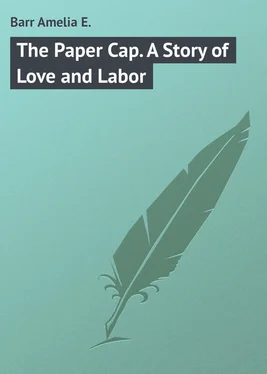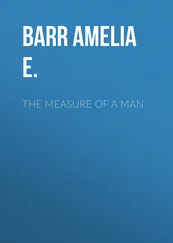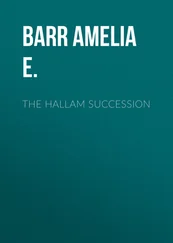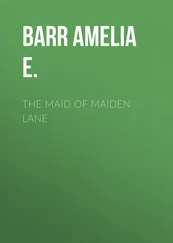Amelia Barr - The Paper Cap. A Story of Love and Labor
Здесь есть возможность читать онлайн «Amelia Barr - The Paper Cap. A Story of Love and Labor» — ознакомительный отрывок электронной книги совершенно бесплатно, а после прочтения отрывка купить полную версию. В некоторых случаях можно слушать аудио, скачать через торрент в формате fb2 и присутствует краткое содержание. ISBN: , Жанр: foreign_prose, на английском языке. Описание произведения, (предисловие) а так же отзывы посетителей доступны на портале библиотеки ЛибКат.
- Название:The Paper Cap. A Story of Love and Labor
- Автор:
- Жанр:
- Год:неизвестен
- ISBN:http://www.gutenberg.org/ebooks/50089
- Рейтинг книги:5 / 5. Голосов: 1
-
Избранное:Добавить в избранное
- Отзывы:
-
Ваша оценка:
- 100
- 1
- 2
- 3
- 4
- 5
The Paper Cap. A Story of Love and Labor: краткое содержание, описание и аннотация
Предлагаем к чтению аннотацию, описание, краткое содержание или предисловие (зависит от того, что написал сам автор книги «The Paper Cap. A Story of Love and Labor»). Если вы не нашли необходимую информацию о книге — напишите в комментариях, мы постараемся отыскать её.
The Paper Cap. A Story of Love and Labor — читать онлайн ознакомительный отрывок
Ниже представлен текст книги, разбитый по страницам. Система сохранения места последней прочитанной страницы, позволяет с удобством читать онлайн бесплатно книгу «The Paper Cap. A Story of Love and Labor», без необходимости каждый раз заново искать на чём Вы остановились. Поставьте закладку, и сможете в любой момент перейти на страницу, на которой закончили чтение.
Интервал:
Закладка:
Amelia E. Barr
The Paper Cap / A Story of Love and Labor
THE WORKER’S FRIEND THIS STORY OF LABOR’S FORTY YEARS’ STRUGGLE FOR THE RIGHT OF SUFFRAGE IS RESPECTFULLY DEDICATED
This is the Gospel of Labor,
Ring it, ye bells of the Kirk,
The Lord of Love came down from above
To live with the people who work.
The headdress of nationalities, and of public and private societies, has been in all ages a remarkable point of interest. Religion, Poetry, Politics, superstitions, and so forth, have all found expression by the way they dressed or covered their heads. Priests, soldiers, sailors, lawyers, traders, professions of all kinds are known by some peculiar covering of the head which they assume. None of these symbols are without interest, and most of them typify the character or intents of their wearers.
The Paper Cap has added to its evident story a certain amount of mystery, favorable in so far as it permits us to exercise our ingenuity in devising a probable reason for its selection as the symbol of Labor. A very industrious search has not yet positively revealed it. No public or private collection of old prints of the seventeenth century that I have seen or heard from has any representation of an English working man wearing a Paper Cap. There is nothing of the kind in any Hone’s four large volumes of curious matters; nor does Notes and Queries mention it. Not until the agitation and the political disturbance attending the Reform Bill, is it seen or mentioned. Then it may be found in the rude woodcuts and chap books of the time while in every town and village it soon became as familiar as the men who wore it.
Now, if the working man was looking for a symbol, there are many reasons why the Paper Cap would appeal to him. It is square, straight, upright; it has no brim. It permits the wearer to have full sight for whatever he is doing. It adds five inches or more to his height. It is cool, light and clean, and it is made of a small square of brown paper, and costs nothing. Every man makes his own paper cap, generally while he smokes his first morning pipe. It was also capable of assuming all the expressions of more pretentious head coverings – worn straight over the brows, it imparted a steady, business-like appearance. Tilted to one side, it showed the wearer to be interested in his own appearance. If it was pushed backward he was worried or uncertain about his work. On the heads of large masterful men it had a very “hands off” look. Employers readily understood its language.
I do not remember ever seeing anyone but working men wear a Paper Cap and they generally wore it with an “air” no pretender could assume. In the days of the Reform Bill a large company of Paper-Capped men were a company to be respected.
The man whose clever fingers first folded into such admirable shape a piece of brown paper seems to be unknown. I was once told he was a Guiseley man, again he was located at Burnley, or Idle. No one pretended to know his name. It was perhaps some tired weaver or carpenter whose head was throbbing in the sultry room and who feared to expose it to the full draught from some open window near his loom or bench. No other affiliation ever assumed or copied this cap in any way and for a century it has stood bravely out as the symbol of Labor; and has been respected and recognized as the badge of a courageous and intelligent class.
Now, if we do not positively know the facts about a certain matter, we can consider the circumstances surrounding it and deduct from them a likelihood of the truth; and I cannot avoid a strong belief that the Paper Cap was invented early in the agitation for the Reform Bill of A. D. 1832 and very likely directly after the immense public meeting at New Hall, where thousands of English working men took bareheaded and with a Puritan solemnity, a solemn oath to stand by the Reform Bill until it was passed. It was not fully passed until 1884, and during that interval the Paper Cap was everywhere in evidence. Might it not be the symbol of that oath and a quiet recognition of brotherhood and comradeship in the wearing of it?
It is certain that after this date, 1884, its use gradually declined, yet it is very far from being abandoned. In Nova Scotia and Canada it is still common, and we all know how slowly any personal or household habit dies in England. I am very sure that if I went to-morrow to any weaving town in the West Riding, I would see plenty of Paper Caps round the great centers of Industry. Last week only, I received half-a-dozen from a large building firm in Bradford.
As a symbol of a sacred obligation between men, it is fitting and unique. It has never been imitated or copied, and if the habit of making a clean one every day is observed, then whatever it promises will be kept clean and clear in the memory. Long live the Paper Cap!
My theory that the Paper Cap is associated with the Reform Bill, may, or may not be correct, but the union seems to be a very natural one – the Bill deserved the friendship and long adherence of the Cap, and the Cap deserved the freedom and strength of the Bill.
CHAPTER I – THE SQUIRE OF ANNIS
“The turning point in life arrives for all of us.
A land of just and old renown,
Where Freedom slowly broadens down
From precedent to precedent.”
NEARLY ninety years ago, there was among the hills and wolds of the West Riding of Yorkshire a lovely village called Annis. It had grown slowly around the lords of the manor of Annis and consisted at the beginning of the nineteenth century of men and women whose time was employed in spinning and weaving. The looms were among their household treasures. They had a special apartment in every home, and were worthily and cheerfully worked by their owners. There were no mills in Annis then, and no masters, and no Trade Unions. They made their own work-hours and the Leeds Cloth Hall settled the worth of their work.
Squire Antony Annis owned the greater part of the village. The pretty white stone cottages, each in its own finely cared-for garden, were, generally speaking, parts of his estate and he took a fatherly, masterly care of them. It was the squire who bought their work, and who had to settle with the Leeds Cloth Hall. It was the squire who found the wool for the women to spin and who supplied the men with the necessary yarns.
He lived close to them. His own ancient Hall stood on a high hill just outside the village! – a many-gabled building that had existed for nearly three hundred years. On this same hilly plateau was the church of Annis, still more ancient, and also the Rectory, a handsome residence that had once been a monastery. Both were in fine preservation and both were influential in the village life, though the ancient church looked down with grave disapproval on the big plain Wesleyan Chapel that had stolen from it the lawful allegiance it had claimed for nearly five centuries. Yet its melodious chimes still called at all canonical hours to worship, and its grand old clock struck in clarion tones the hours of their labor and their rest.
They were handsome men in this locality, strong and powerful, with a passion for horses and racing that not even Methodism could control. Their women were worthy of them, tall and fine-looking, with splendid coloring, abundant hair, and not unfrequently eyes like their Lancashire neighbors; gray and large, with long dark lashes, and that “look” in them which the English language has not yet been able to find a word for. They were busy wives, they spun the wool for their husbands’ looms and they reared large families of good sons and daughters.
The majority of the people were Methodists – after their kind. The shepherds on the mountains around took as naturally to Methodism as a babe to its mother’s milk. They lived with their flocks of Merino sheep half their lives in the night and its aërial mysteries. The doctrine of “Assurance” was their own spiritual confidence, and John Wesley’s Communion with the other world they certified by their own experience. As to the weavers, they approved of a religion that was between God and themselves only. They had a kind of feudal respect for Squire Annis. He made their pleasant independent lives possible and they would take a word or two of advice or reproof from him; and also the squire knew what it was to take a glass of strong ale when he had been to a race and seen the horse he had backed, win it – but the curate! The curate knew nothing about horses.
Читать дальшеИнтервал:
Закладка:
Похожие книги на «The Paper Cap. A Story of Love and Labor»
Представляем Вашему вниманию похожие книги на «The Paper Cap. A Story of Love and Labor» списком для выбора. Мы отобрали схожую по названию и смыслу литературу в надежде предоставить читателям больше вариантов отыскать новые, интересные, ещё непрочитанные произведения.
Обсуждение, отзывы о книге «The Paper Cap. A Story of Love and Labor» и просто собственные мнения читателей. Оставьте ваши комментарии, напишите, что Вы думаете о произведении, его смысле или главных героях. Укажите что конкретно понравилось, а что нет, и почему Вы так считаете.












